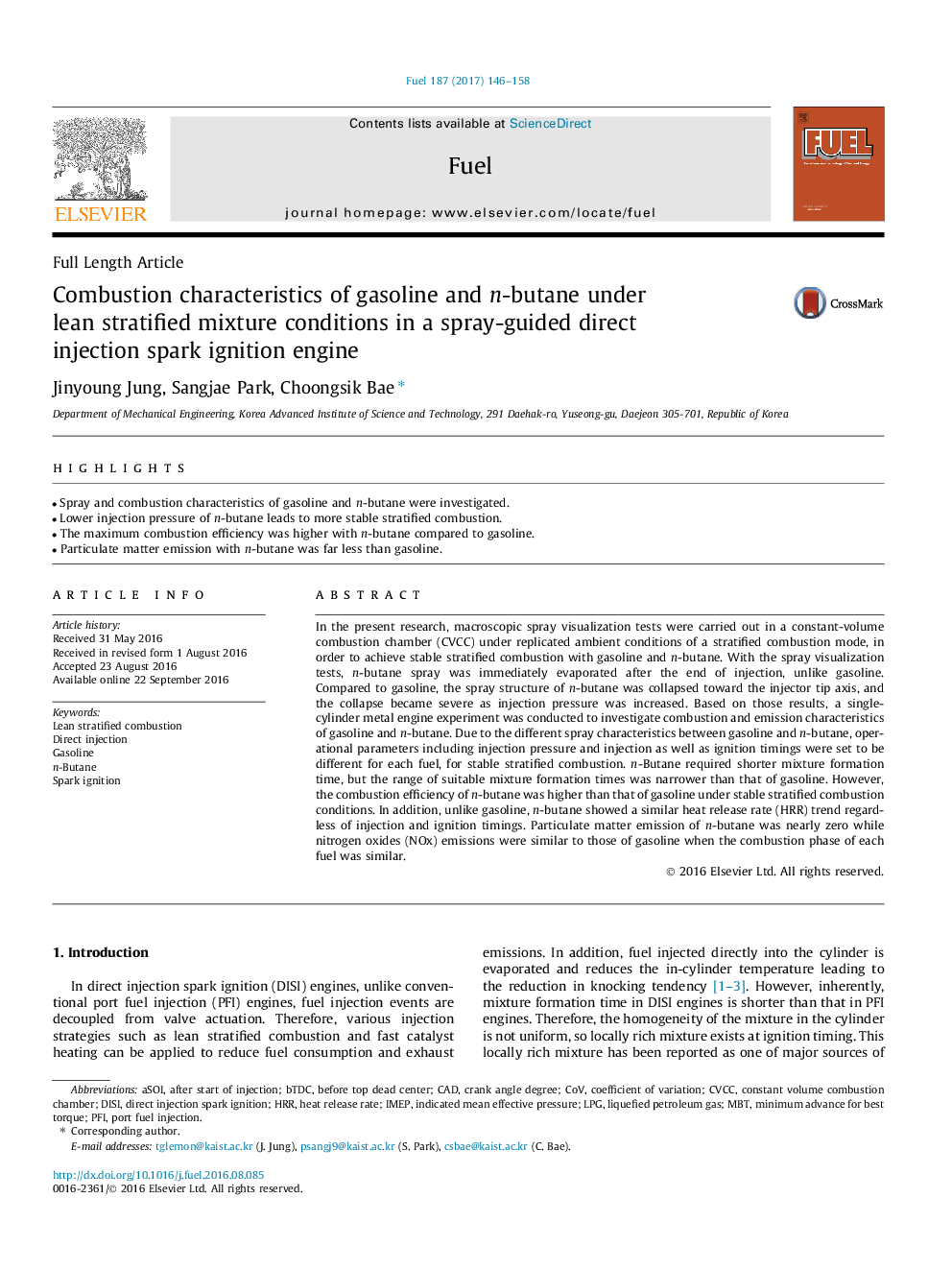| کد مقاله | کد نشریه | سال انتشار | مقاله انگلیسی | نسخه تمام متن |
|---|---|---|---|---|
| 6475931 | 1424977 | 2017 | 13 صفحه PDF | دانلود رایگان |

- Spray and combustion characteristics of gasoline and n-butane were investigated.
- Lower injection pressure of n-butane leads to more stable stratified combustion.
- The maximum combustion efficiency was higher with n-butane compared to gasoline.
- Particulate matter emission with n-butane was far less than gasoline.
In the present research, macroscopic spray visualization tests were carried out in a constant-volume combustion chamber (CVCC) under replicated ambient conditions of a stratified combustion mode, in order to achieve stable stratified combustion with gasoline and n-butane. With the spray visualization tests, n-butane spray was immediately evaporated after the end of injection, unlike gasoline. Compared to gasoline, the spray structure of n-butane was collapsed toward the injector tip axis, and the collapse became severe as injection pressure was increased. Based on those results, a single-cylinder metal engine experiment was conducted to investigate combustion and emission characteristics of gasoline and n-butane. Due to the different spray characteristics between gasoline and n-butane, operational parameters including injection pressure and injection as well as ignition timings were set to be different for each fuel, for stable stratified combustion. n-Butane required shorter mixture formation time, but the range of suitable mixture formation times was narrower than that of gasoline. However, the combustion efficiency of n-butane was higher than that of gasoline under stable stratified combustion conditions. In addition, unlike gasoline, n-butane showed a similar heat release rate (HRR) trend regardless of injection and ignition timings. Particulate matter emission of n-butane was nearly zero while nitrogen oxides (NOx) emissions were similar to those of gasoline when the combustion phase of each fuel was similar.
Journal: Fuel - Volume 187, 1 January 2017, Pages 146-158